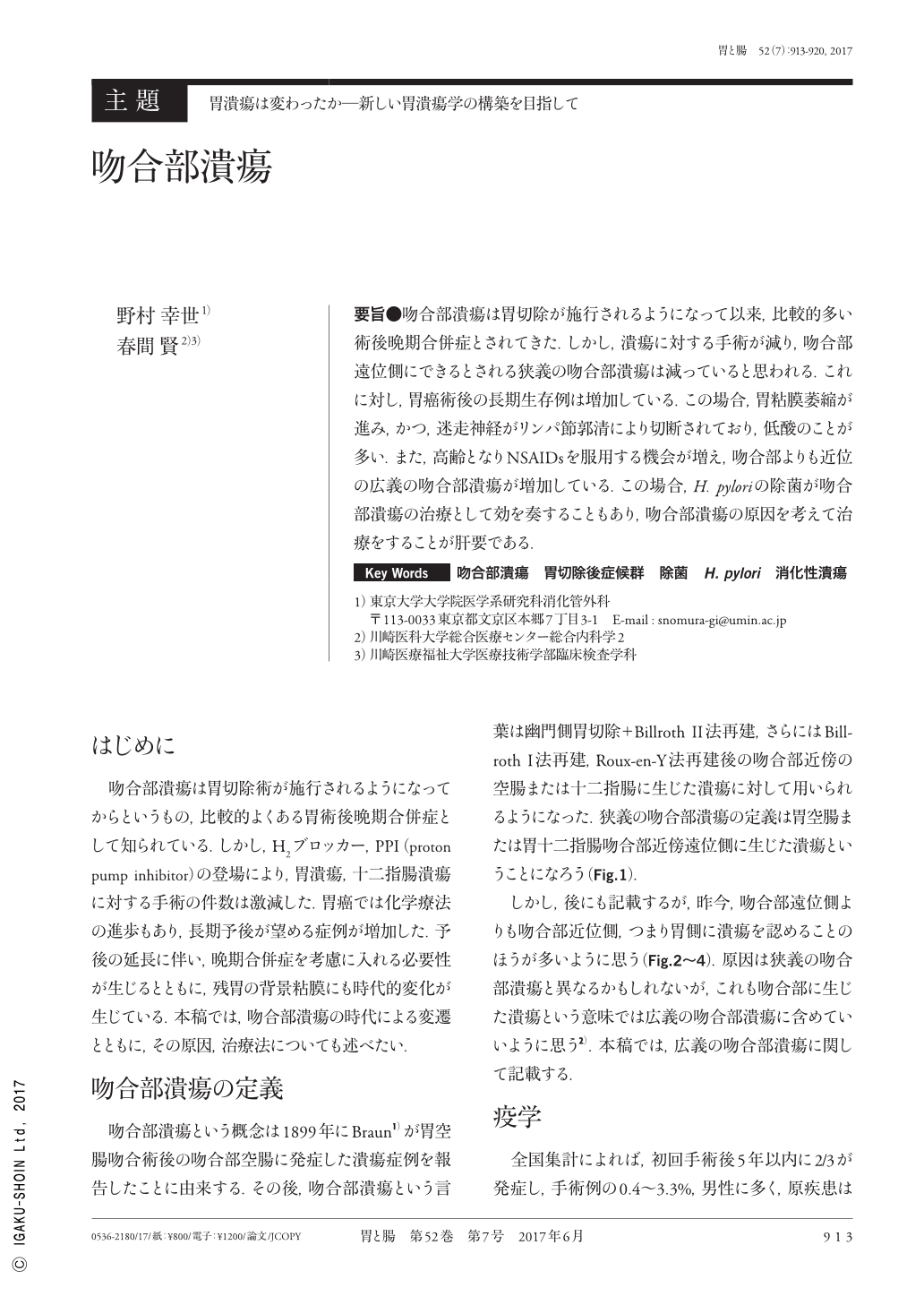Japanese
English
- 有料閲覧
- Abstract 文献概要
- 1ページ目 Look Inside
- 参考文献 Reference
- サイト内被引用 Cited by
要旨●吻合部潰瘍は胃切除が施行されるようになって以来,比較的多い術後晩期合併症とされてきた.しかし,潰瘍に対する手術が減り,吻合部遠位側にできるとされる狭義の吻合部潰瘍は減っていると思われる.これに対し,胃癌術後の長期生存例は増加している.この場合,胃粘膜萎縮が進み,かつ,迷走神経がリンパ節郭清により切断されており,低酸のことが多い.また,高齢となりNSAIDsを服用する機会が増え,吻合部よりも近位の広義の吻合部潰瘍が増加している.この場合,H. pyloriの除菌が吻合部潰瘍の治療として効を奏することもあり,吻合部潰瘍の原因を考えて治療をすることが肝要である.
Anastomotic ulcer is one of the common complications of gastrectomy. However, anastomotic ulcer, sensu stricto, is decreasing due to the decrease of gastrectomy for the treatment of peptic ulcer disease. In contrast, many patients can survive long time after gastrectomy for gastric cancer, and they tend to have anastomotic ulcers on the proximal side of the anastomosis. This is because of lower acid secretion caused by atrophy of the gastric mucosa, cutting of the vagus nerve for lymph node dissection, and use of NSAIDs for the treatment of other diseases. In these situations, Helicobacter pylori eradication is sometimes effective for the cure of ulcer. It is important to select appropriate treatment for anastomotic ulcers based on the etiology.

Copyright © 2017, Igaku-Shoin Ltd. All rights reserved.


